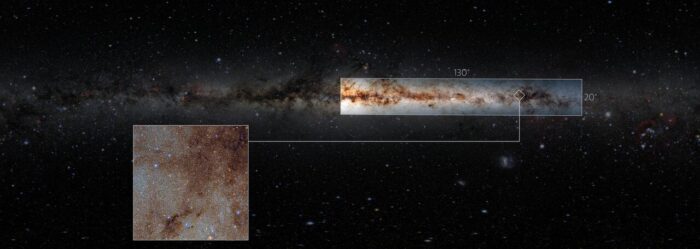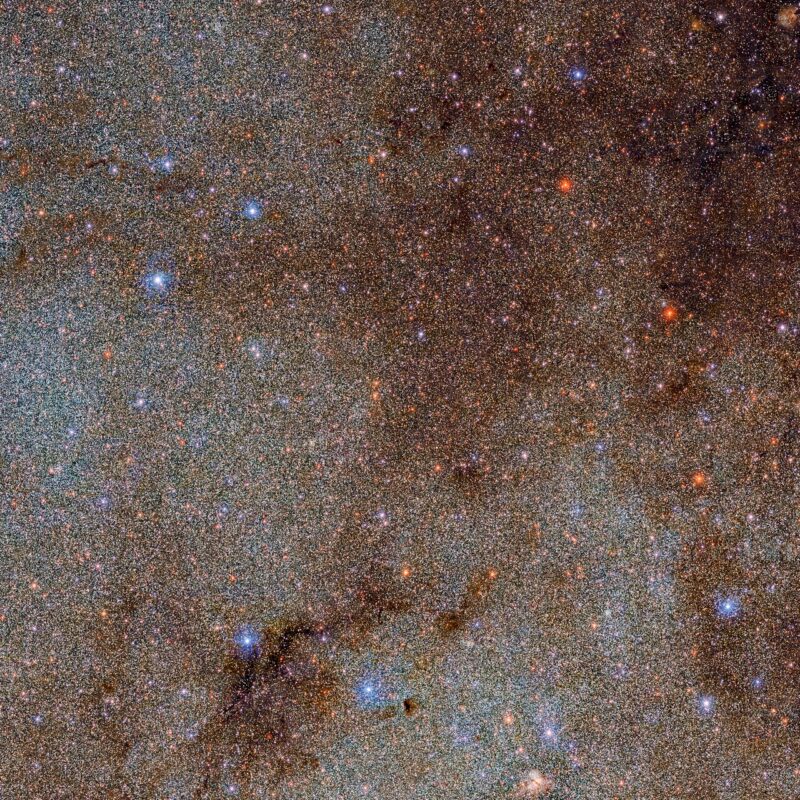The Milky Way is our home. At least, that's one way of looking at it!
Our solar system careens through space as a part of this spiral galaxy. It's really fascinating, if difficult to picture.
Astronomers at the Cerro Tololo Inter-American Observatory in Chile are using a device called the Dark Energy Camera. They have been surveying (imaging) the Milky Way for months. After collecting a remarkable 21,400 separate images, they have made a composite portrait of the Milky Way. (A composite is something that is made of many smaller pieces put together).
The final product is called the Dark Energy Camera Plane Survey. You might think that the image at the top of this post is that image. But that is actually just a tiny square pulled from the the larger composite.
Here is the composite ...

The Dark Energy Camera Plane Survey, a new panorama of the Milky Way. (DECaPS2/DOE/FNAL/DECam/CTIO/NOIRLab/NSF/AURA Image Processing: M. Zamani & D. De Martin (NSF’s NOIRLab))
It's tough to understand but this image contains 3.32 billion objects. That's a lot of Milky Way.
And it's still not everything!
Incredibly, that portrait is still not the entire galaxy. But it is a pretty decent slice!
Experts estimate that we have somewhere between 100 to 400 billions stars in the Milky Way, and about the same number of planets. To collect all of that in one photo, especially with us sitting inside the galaxy, is impossible. But that doesn't take anything away from what a stunning achievement this is.
In fact, if you have the highest resolution version of this composite, you could zero in on all 3 billion of these objects. Mind-blowing!
And in case you're wondering how the top image fits into the larger Milky Way portrait, here you go!

The first image is actually just a tiny square of the second one. Wow! (DECaPS2/DOE/FNAL/DECam/CTIO/NOIRLab/NSF/AURA Image Processing: M. Zamani & D. De Martin (NSF’s NOIRLab))
Pretty impressive, right?
 Look at all of those stars! Even though this image contains millions of stars, it is just a tiny slice of our Milky Way. Wait until you see what we mean! (DECaPS2/DOE/FNAL/DECam/CTIO/NOIRLab/NSF/AURA Image Processing: M. Zamani & D. De Martin (NSF’s NOIRLab))
Look at all of those stars! Even though this image contains millions of stars, it is just a tiny slice of our Milky Way. Wait until you see what we mean! (DECaPS2/DOE/FNAL/DECam/CTIO/NOIRLab/NSF/AURA Image Processing: M. Zamani & D. De Martin (NSF’s NOIRLab))









